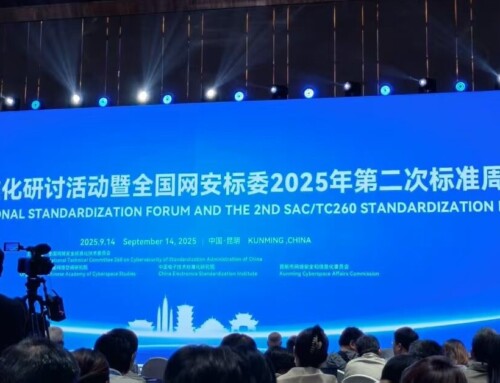On April 14, 2025, The Ministry of Industry and Information Technology (MIIT) of China has completed the drafting of the mandatory national standard titled Requirements for the Restriction of the Use of Hazardous Substances in Electrical and Electronic Products (final draft for approval). To further solicit public opinions, the draft for approval and its explanatory notes are published for public consultation. The deadline for feedback is April 21, 2025.
Overview of the Development of the Mandatory National Standard under China RoHS by SESEC is as below
- Regulatory Background and Evolution
“China RoHS” refers to the Regulations for the Administration on the Restriction of the Use of Hazardous Substances in Electrical and Electronic Products, which aim to restrict the use of certain hazardous substances in electrical and electronic products, promote environmental protection, and advance green manufacturing. The initial version was implemented in 2006 (RoHS 1), with the current version (RoHS 2) in effect since July 1, 2016. The framework aligns closely with the EU RoHS 2 Directive (2011/65/EU). - Launch of Mandatory National Standard Project
On December 28, 2023, the Standardization Administration of China (SAC) issued the project approval for a new mandatory national standard titled Requirements for the Restriction of the Use of Hazardous Substances in Electrical and Electronic Products(Project No. 20231685-Q-339). The project was initiated by the Ministry of Industry and Information Technology (MIIT) and organized by SAC/TC297/SC3, with the China Electronics Standardization Institute (CESI) leading the drafting. The planned development cycle is 16 months. - Call for Drafting Organizations and Project Kick-off
In early 2024, SAC/TC297/SC3 publicly solicited interested parties to join the drafting process. A working group composed of enterprises, industry associations, research institutions, and testing/certification bodies was established. The kick-off meeting was held on March 20, 2024, officially launching the drafting phase. - Public Consultation and Technical Review
A draft for public consultation was completed in October 2024 and submitted to the MIIT’s Department of Energy Conservation and Comprehensive Utilization. From November 2024 to January 2025, the MIIT’s Department of Science and Technology launched a public consultation. On March 16, 2025, SAC/TC297/SC3 held a full committee review meeting (online), and a final version was submitted for approval after incorporating expert feedback. - Purpose and Issues Addressed by the Standard
The new standard addresses the gap between mandatory regulations and their supporting voluntary standards (GB/T 26572-2011 and SJ/T 11364-2014). These voluntary standards lack legal enforceability, leading to poor implementation, compliance misunderstandings, and difficulties in regulatory enforcement. The revision aims to consolidate the two standards into a single, mandatory national standard to ensure consistency with legal obligations and improve enforceability. - Technical Content and Alignment with International Practices
The standard covers 10 restricted substances—lead, mercury, cadmium, hexavalent chromium, polybrominated biphenyls (PBB), polybrominated diphenyl ethers (PBDE), and four phthalates (DEHP, DBP, BBP, DIBP)—with limit values consistent with those in the EU RoHS Directive (2011/65/EU), ensuring international alignmen - Scope and Standard Integration
This new standard will integrate and replace GB/T 26572-2011 (including its amendment) and is expected to render SJ/T 11364-2024 obsolete. It applies to all electrical and electronic products falling under the scope of China RoHS, not limited to specific categories. - Implementation Timeline and Transition Period
A two-year transition period is proposed following the standard’s official release to allow enterprises sufficient time to adapt. Additionally, a one-year grace period is suggested for stock products manufactured or imported before the implementation date, enabling smooth market transition. - Conformity Assessment and Supporting Measures
This standard applies to all products within the scope of China RoHSwithout conformity assessment methods inside. For products listed in the Conformity Management Catalogue, enterprises must follow applicable conformity assessment procedures, including the Implementation Plan for the Conformity Assessment System, Voluntary Certification Rules, or Supplier Declaration of Conformity Rules. The new mandatory standard will serve as a legally binding technical basis for enforcement, improving regulatory clarity and effectiveness.
SESEC has followed this standard drafting process since the beginning of 2024. SESEC translated the Drafts for Comments and distributed to EU stakeholders in late 2024. The previous news items on this subject are listed below.
Mandatory Standard Draft Revised at China RoHS Working Meeting
China Calls for Comment on Revised RoHS Standard
New Mandatory Standard for China RoHS Nears Completion – sesec.eu
As the commenting period is really short, SESEC team can not provide the translation of the draft but made the summary as above.
Access to the original article in Chinese from here:




